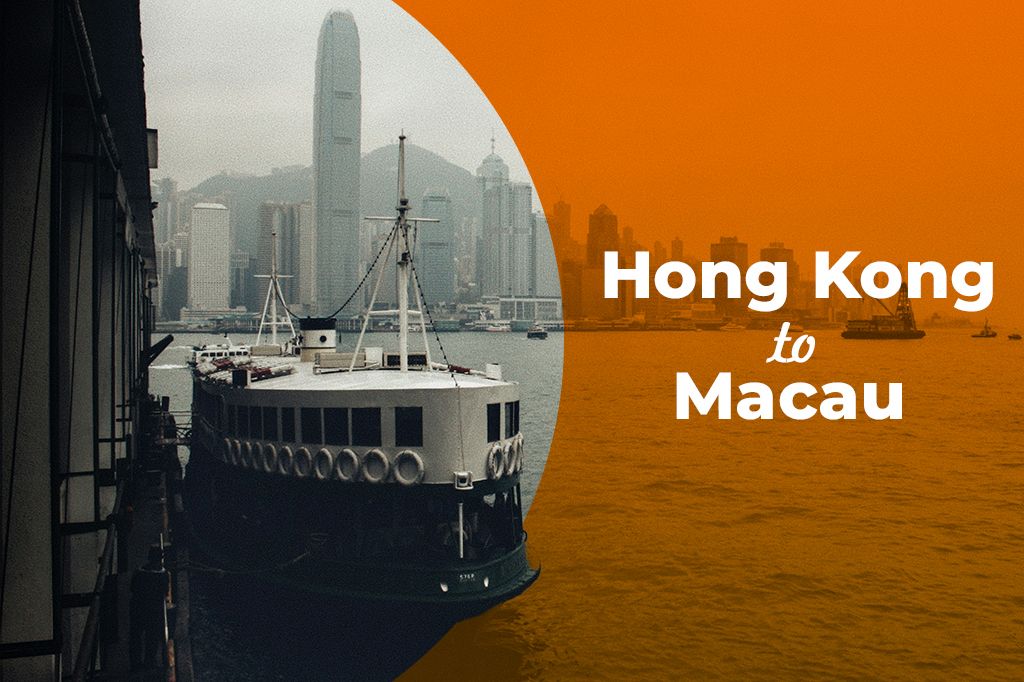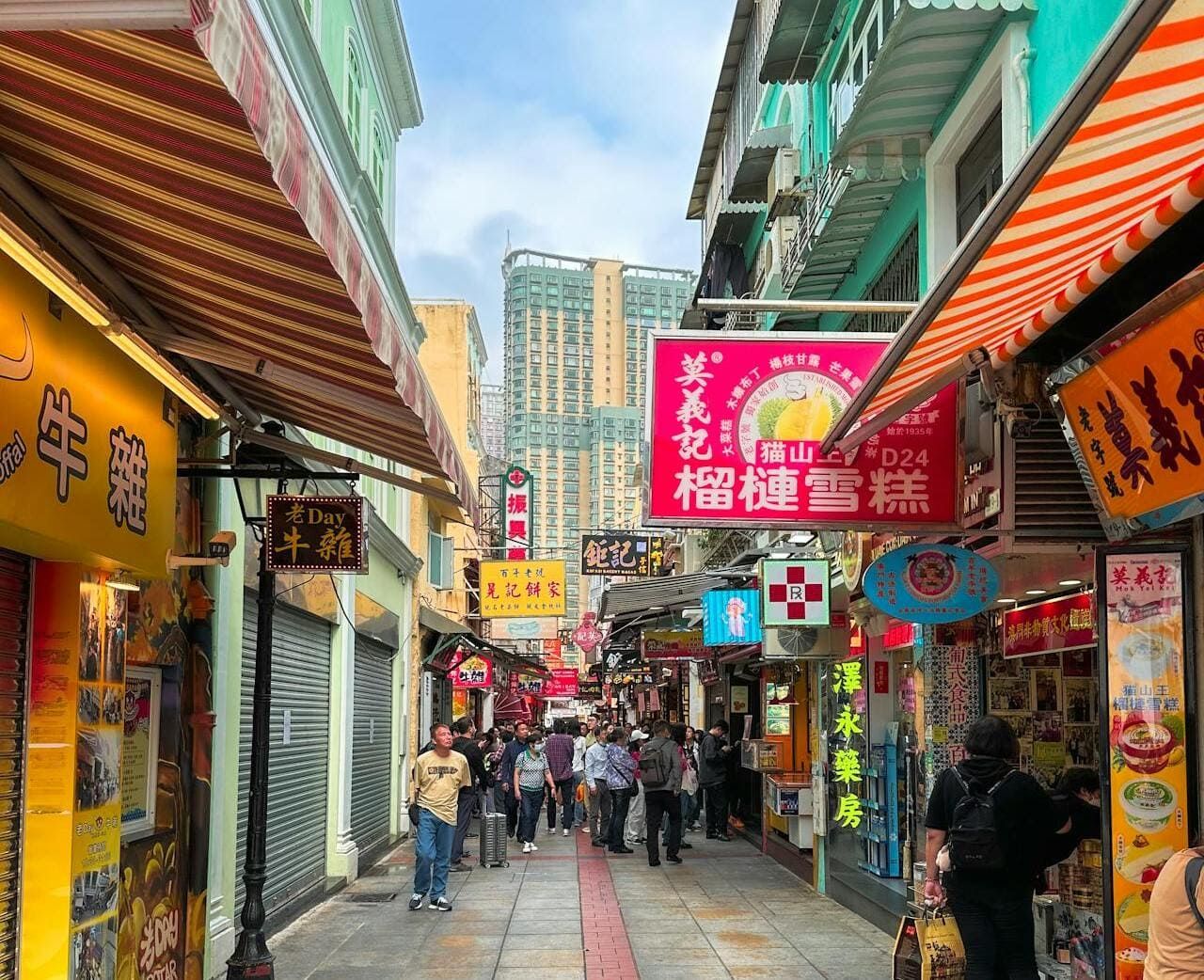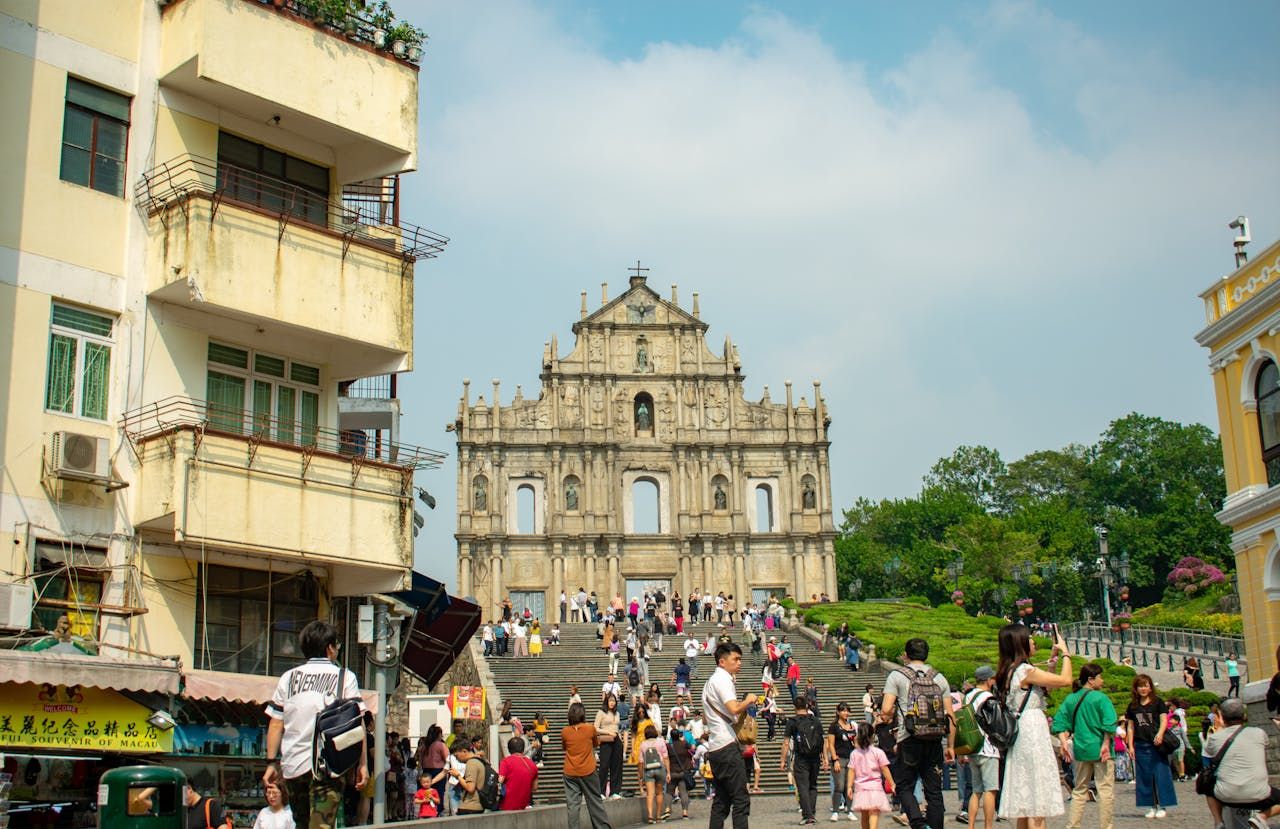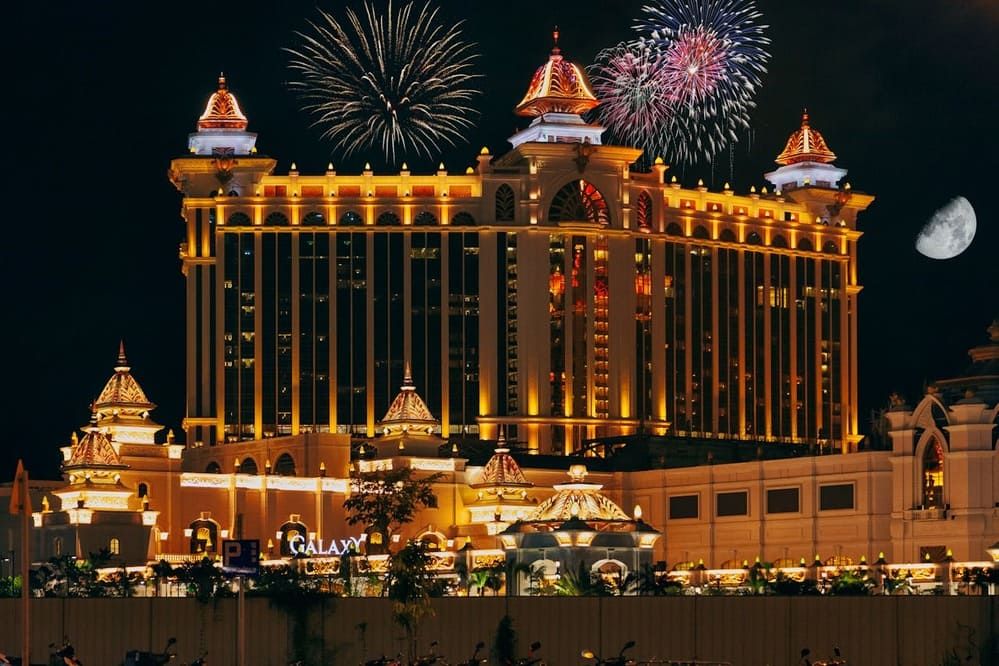Beyond the Ferry: The Smart Traveler’s Guide to Hong Kong-Macau Travel
Beatriz•Jun 06, 2025
You might think Macau is just a quick stop for the casinos on a day trip from Hong Kong. But once you spend some time there, you’ll see it’s so much more. Whether you’re planning a short visit or staying overnight, we’ll walk you through the best ways to get there and what to check out so your trip is easy and fun.

Picture by Taso Katsionis on Unsplash
Why Macau Is More Than a Day Trip
Macau has proven to be a destination that deserves more than just a day visit. With millions of visitors returning each year, new policies are making it easier for travelers from additional mainland Chinese cities to visit frequently. While the casinos remain a huge attraction, Macau’s allure goes far beyond gambling. The city’s historic center, filled with beautiful Portuguese architecture, delicious fusion cuisine, and fun festivals, invites you to linger and truly experience its culture.
What sets Macau apart is its clear Portuguese heritage, visible in its architecture, language, and traditions. Unlike nearby Hong Kong, which reflects British colonial history with modern skyscrapers and bustling city life, Macau’s streets are lined with cobblestones, historic churches, and plazas. The city’s calendar is full of unique events like the Macau Grand Prix and traditional festivals such as the Feast of the Drunken Dragon. For travelers visiting the region, Macau is a chance to step into a distinct cultural world that goes far beyond its famous casinos.
Day Trip vs. Overnight Stay: Pros, Cons, and Experiences
For those coming from Hong Kong, a day trip to Macau is convenient thanks to frequent ferries and bridge connections. It lets you have plenty of time to visit well-known sites like Senado Square and the Ruins of St. Paul’s, and to try a casino or two.
However, a day trip won’t allow enough time to visit museums, explore local neighborhoods, or experience the city’s nightlife and wider dining options. Staying overnight, however, offers a very different experience. Having extra time makes it possible to visit heritage sites in more detail, catch concerts or shows, and enjoy a broader selection of local and fusion dishes. It also allows you to explore quieter parts of the city and get a sense of everyday life. Although it involves arranging accommodations and possibly spending a bit more, that extra effort pays off by revealing aspects of Macau’s history, architecture, and cultural festivals that are missed on shorter visits.
All the Ways to Travel from Hong Kong to Macau: Which One’s Best for You?
Traveling between Hong Kong and Macau has a world of possibilities. But choosing the right one is up to what matters most to you: time, budget, comfort, or convenience.
Ferries have long been the go-to choice. TurboJET and Cotai Water Jet run frequent services from Hong Kong’s Sheung Wan or Kowloon terminals to Macau’s Outer Harbour or Taipa ports. It takes about an hour and costs between HK$175 and HK$220. The ride is comfortable, and the sea views are a nice bonus. However, rough seas can sometimes make the journey less pleasant or even delay it.
The Hong Kong-Zhuhai-Macau Bridge (HZMB) has changed the game since it opened in 2018. The shuttle bus is the cheapest way to cross, at about HK$65, and takes around 35 to 40 minutes. But the Hong Kong Port is quite far from the city center, and you’ll have to clear immigration on both ends, which can add up to 30 minutes each way if it’s busy. Cross-border coaches depart from convenient urban locations and drop off directly at Macau hotels, though the trip takes closer to 90 minutes depending on traffic. It’s a solid middle ground for those looking for cost-effectiveness and convenience without ferry schedules.
For travelers who want door-to-door service and maximum comfort, private car or limousine transfers are great options too. These can take between 60 to 90 minutes and handle all the logistics, but they come with a hefty price tag starting around HK$3,200. Helicopters, while pricey, offer the fastest and most luxurious travel option, making them ideal for those with tight schedules or premium budgets.
Although ferries are popular, they’re not always the fastest option. Boarding times and unpredictable sea conditions can add delays. In some cases, the bridge shuttle or a private car can get you there quicker, especially if you’re near the Hong Kong Port or airport. But immigration lines on the bridge can slow you down, so it’s wise to plan accordingly.
A few tips from experience: on ferries, book tickets online ahead to avoid lines, and choose your seat wisely to minimize motion sickness. If taking the HZMB shuttle, try to travel off-peak and have your documents ready for immigration. When using cross-boundary buses, pick routes that drop you directly at your hotel to save transfer time, and avoid rush hours in both cities.
When to Book Ahead & What to Avoid During Peak Travel
The busiest times to travel between Hong Kong and Macau include Chinese National Holidays like the first week of October and Chinese New Year, when a flood of visitors from mainland China and beyond swarm both cities. During these periods, ferry tickets and hotel rooms sell out quickly, and immigration lines are very long.
For ferry travelers, secure tickets online well in advance to guarantee better seat choices, especially on holidays and weekends. Avoid buying tickets last minute at terminals during busy times to cut down on waiting. Early morning and late evening sailings tend to be less crowded.
If crossing via the Hong Kong-Zhuhai-Macau Bridge shuttle bus, arrive early at the Hong Kong Port to clear immigration before the lines build up. Midday and late evening trips face shorter queues. Booking shuttle tickets ahead is also a wise move during holidays. Cross-boundary buses also get crowded during peak times. Booking in advance and choosing buses that drop passengers directly at Macau hotels can save you valuable time.
Overall, if possible, steer clear of major public holidays and weekends. Traveling midweek, outside of peak holiday periods, means fewer crowds, shorter waits, and better availability.
What Immigration Is Actually Like Between Hong Kong and Macau
Many first-time travelers don’t expect to go through two full immigration checks or exit vehicles for inspection when taking buses or private cars. Others are caught off guard by paperwork requirements if they’re not enrolled in e-channels.
Crossing between Hong Kong and Macau means going through immigration twice: once to exit and once to enter. Whether by ferry or via the Hong Kong-Zhuhai-Macau Bridge (HZMB), you need valid passports or ID cards, and in some cases, visas. Permanent residents of Hong Kong or Macau can use automated e-channels for faster processing.
Ferry terminals tend to offer a more straightforward experience, especially during off-peak hours. With frequent departures and simpler boarding procedures, they’re often faster than bridge crossings. However, sea conditions and holiday crowds can still cause delays.
Sample Itineraries That Fit Your Travel Style
If you only have one day in Macau, lean into its compact layout and start early. Begin in the UNESCO-listed Historic Centre, where cobbled streets lead naturally to the Ruins of St. Paul’s, a 17th-century stone façade that’s more impressive in person than in photos. From there, it’s just a short walk to Senado Square, where colonial architecture and mosaic tiles echo the city’s Portuguese roots. To keep the historical thread going, follow the signs to A-Ma Temple, whose incense-filled halls have stood since the Ming Dynasty.
After a full morning on foot, recharge with a local lunch: pork chop buns or steaming egg tarts are quick, satisfying staples. In the afternoon, head to Guia Fortress and make the climb up Guia Hill, where panoramic city views give context to where you’ve been. If there’s still energy to spare, finish at the Macau Tower: whether it’s for the sky-high views or just to soak up the skyline at sunset, it brings the day full circle.
In two days, you can slow the pace and go deeper into the details. Start day one with the same historic route—Ruins of St. Paul’s, Senado Square, and A-Ma Temple, but add time inside the Macau Museum to understand the city’s unique blend of Chinese and Portuguese influences. That added context makes the architecture and rituals feel more alive. As night falls, trade quiet streets for Cotai’s dramatic lights: book tickets for The House of Dancing Water or check the lineup at Sands Cotai Theatre for a polished performance.
Day two opens with a change of scenery. Head to Taipa Village, where narrow lanes host pastel homes, hidden temples, and dessert shops selling serradura and almond cookies. It’s a softer, more local side of Macau. From there, Cotai is just minutes away; its massive integrated resorts are worth exploring, even if casinos aren’t your scene.
The Venetian offers gondola rides and sprawling malls; the Parisian stuns with its Eiffel Tower replica and rooftop views. Cap your visit with a Macanese-Portuguese dinner: African chicken, salted cod, or spicy clams are flavorful nods to Macau’s global past.
With Kids or Without Casinos?
Families and non-gamblers will find that Macau offers far more than casino floors. Outdoor spaces like Mong Ha Park provide playgrounds and walking paths, making them ideal for young children. Educational venues such as the Maritime Museum offer engaging exhibits about seafaring history, while the Macau Science Center is designed with interactive displays suited for curious minds of all ages.
Instead of casino complexes, quieter areas like Taipa Village offer local restaurants, temples, and pedestrian-friendly streets perfect for slow exploration. The Macau Tower observation deck, while known for its adventure sports, also provides non-gambling visitors with stunning views and a calm space to unwind.
For easier transport, hop-on, hop-off sightseeing buses help families cover more ground without the stress of planning complex transit routes. By focusing on parks, cultural attractions, and kid-friendly museums, it’s easy to enjoy Macau without setting foot in a casino.
Getting Around After You Arrive (and What to Avoid)
When you get to Macau, you’ll mostly use buses, taxis, and the light rail to get around. The bus system covers a lot, but can be tricky and crowded during busy times, especially near ferry terminals and Cotai.
Taxis are helpful but not always easy to find, especially when it’s busy or far from the city center. A great tip: many big hotels offer free shuttle buses that anyone can use, even if you’re not staying there. These shuttles drop you off near popular spots and save you a lot of hassle. The light rail is clean and cool, but only runs in some areas like Taipa and Cotai for now. Macau is also super walkable, with bridges and paths connecting many places. In the old town, walking can be faster than taking a taxi.
When it comes to language, Cantonese is what most people speak. You’ll hear Mandarin too, especially in shops and with younger people. English is mostly spoken in hotels, casinos, and busy tourist spots, but outside those places, you might need to use gestures or your phone’s translator. Luckily, signs are usually in three languages: Cantonese, Portuguese, and English, so you won’t get lost.
If you visit temples, remember to keep your voice down, don’t use flash for photos, and don’t interrupt anyone praying. Sometimes you’ll need to take off your hat or shoes and just watch what others do or look for signs. In restaurants, wait for older people or your host to start eating before you dig in. And don’t stick your chopsticks straight up in your rice. That’s bad luck here. Splitting the bill is normal, and tipping isn’t expected but leaving a little change is nice if the service was good. When exploring historic areas, be respectful of old buildings and streets, don’t eat while walking, and use trash bins.
The Best Things to Do in Macau Beyond the Casinos
Macau has much more to offer than just casinos. One of the most famous sights is the Ruins of St. Paul’s, the front wall of a 17th-century church that burned down long ago. It features beautiful stone carvings mixing European and Asian styles and sits near Senado Square in Macau’s historic center. After visiting the ruins, you can explore nearby attractions like Mount Fortress for great city views, the Macau Museum to learn about local history, and the Museum of Sacred Art and Crypt behind the ruins, which shows religious artifacts. The surrounding streets are full of shops selling local treats like Portuguese egg tarts and almond cookies, giving you a rich taste of Macau’s culture.
If you want to try authentic Macanese food away from the tourist crowds, there are great local restaurants like Restaurante Litoral, famous for dishes like minchi and African chicken; A Lorcha, known for traditional seafood and bacalhau; and O Santos, a small eatery serving home-style favorites like pork chop buns and curry crab. These spots offer a real glimpse into Macau’s unique food scene beyond the casinos.
Some attractions can’t be found in nearby Hong Kong. The Taipa Houses Museum in Taipa Village shows Portuguese colonial homes and local culture. Hac Sa Beach on Coloane Island is known for its black sand and peaceful setting. Coloane Village keeps its fishing village vibe with narrow streets and local eateries, plus hiking trails through green hills and coastal views.
Even without gambling, Macau’s casinos are worth visiting for their stunning architecture, shows, and luxury dining. The Venetian Macau recreates Venice with canals and gondolas, while City of Dreams features the amazing “House of Dancing Water” water show. Many casinos host concerts, theater, and offer fine dining. Some resorts feel like Las Vegas, with big gaming floors and luxury shopping, while others focus on culture and art.
Money, SIM Cards, and Practical Details Most People Get Wrong
In Macau, you can use both Hong Kong dollars (HKD) and Macanese pataca (MOP), but it’s best to carry some MOP for small purchases since small vendors often prefer it and may give worse exchange rates if you pay in HKD. Most businesses accept HKD at about the same value as MOP. Exchange money at banks, airports, or licensed changers for the best rates, and avoid hotels or casinos where rates are usually worse. ATMs are convenient, but watch for fees.
For mobile service, you can choose a physical SIM card or an eSIM. Physical SIMs are sold at airports, ferry terminals, and stores, with providers like CTM and SmarTone offering prepaid plans. eSIMs, which are digital and can be set up before arrival if your phone supports them. If you’re interested in trying an easy-to-use eSIM, Yoho Mobile offers a free trial that lets you get online quickly without a physical SIM card or contract.
When packing for Macau, think of hot, humid weather with frequent rain and strong sun. Lightweight, breathable, quick-dry clothes, a waterproof jacket, comfortable shoes, a hat, sunglasses, and a small umbrella are essentials. Bring insect repellent, sunscreen, after-sun lotion, moisturizer, and a refillable water bottle to stay comfortable and protected.
Real FAQs from Travelers
Is it worth staying overnight in Macau?
Yes, staying overnight is a good idea if you want to relax and see Macau at night. It gives you more time to visit places, watch shows, and enjoy the food. There are many hotels, some offering deals like free nights for longer stays. With easier visa rules and more hotel rooms, it’s easier to stay longer and also explore nearby Hengqin. Overall, spending the night lets you enjoy more than just a quick day trip.
Do I need travel insurance for a short trip?
Travel insurance isn’t required but is highly recommended. It helps cover medical costs, trip cancellations, lost bags, and emergencies. Medical care can be expensive if you don’t have insurance. It can also help if you face delays or lose important documents. If you plan risky activities, insurance is even more important. Buy insurance after booking flights and hotels to protect your trip. Look for a plan that fits your needs and budget.
How late can I return to Hong Kong?
The last ferry from Macau to Hong Kong usually leaves around 11 PM from either the Macau Outer Harbour or the Taipa ferry terminals. The trip takes about an hour. Ferries from Hong Kong to Macau also run until about 11 PM. Check the schedule before you travel because times can change. If you miss the last ferry, you might need to use the Hong Kong-Zhuhai-Macau Bridge shuttle or a private ride, but those have their own time limits too.
Can I use my Octopus Card in Macau?
You can use the Octopus Card in some places like Galaxy Macau and Broadway Macau casinos, but it’s not accepted everywhere in Macau. Public transport like the Macau Light Rapid Transit does not accept Octopus. Most shops and transport prefer cash (Macanese Pataca or Hong Kong dollars) or credit cards. A new Octopus Card coming in September 2025 will work in Hong Kong, Macau, and many cities in mainland China by converting payments automatically. Until then, it’s best to carry local money or other payment methods in Macau.



